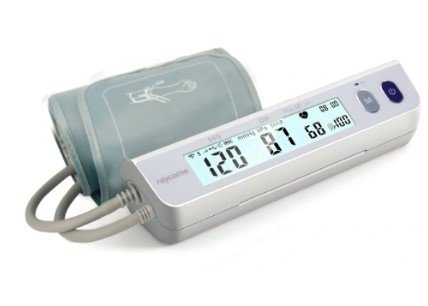Enhancing Blood Sample Collection with Wearable Technology: A Phlebotomist's Guide
Summary
- Phlebotomists can use patient feedback from wearables to improve blood sample collection techniques.
- Utilizing technology can help phlebotomists identify areas for improvement in sample processing.
- Feedback from wearables can lead to more accurate and efficient laboratory results.
Introduction
Phlebotomists play a crucial role in the healthcare system by collecting blood samples for testing in the lab. With the rise of wearable technology, patients now have access to real-time health data that can provide valuable insights for improving the blood collection and processing process. In this article, we will explore how phlebotomists can leverage patient feedback from wearables to enhance their practice and optimize laboratory results.
Understanding Wearables
Wearable devices such as smartwatches and fitness trackers have become increasingly popular among consumers looking to monitor their health and wellness. These devices collect a wide range of data, including heart rate, sleep patterns, activity levels, and more. By analyzing this data, patients can gain valuable insights into their health status and make informed decisions about their lifestyle choices.
Benefits of Wearables
- Real-time Monitoring: Wearables provide continuous monitoring of vital signs and health metrics, allowing patients to track changes over time.
- Early Detection: By detecting subtle changes in health parameters, wearables can help identify potential health issues before they escalate.
- Personalized Insights: Wearables use data analytics to provide personalized recommendations for improving health and wellness.
Utilizing Patient Feedback
Phlebotomists can leverage the data collected by wearables to improve blood sample collection and processing in several ways:
Optimizing Collection Techniques
- Identifying Vein Health: Wearables can monitor blood flow and vein health, helping phlebotomists determine the best sites for blood collection.
- Tracking Hydration Levels: Dehydration can make it difficult to find suitable veins for blood draws. Wearables can alert patients to low hydration levels, enabling them to hydrate adequately before their appointment.
- Monitoring Activity Levels: Physical activity can affect blood circulation and clotting times. Phlebotomists can advise patients on adjusting their activity levels before a blood draw for optimal results.
Enhancing Sample Processing
- Improving Turnaround Time: Wearables can track the time it takes for blood samples to be collected and processed. Phlebotomists can use this data to streamline their Workflow and reduce turnaround times for Test Results.
- Ensuring Sample Quality: Wearables can detect factors that may affect the quality of blood samples, such as temperature fluctuations or excessive movement. Phlebotomists can take precautions to ensure Sample Integrity during collection and processing.
- Monitoring Patient Comfort: Wearables can provide feedback on patient comfort levels during blood draws, helping phlebotomists make adjustments to minimize pain and anxiety for future appointments.
Implementing Technology in the Lab
Incorporating wearable technology into the laboratory setting can lead to more accurate and efficient results for both patients and Healthcare Providers. By integrating patient feedback from wearables into the blood collection and processing process, phlebotomists can improve the overall quality of care and enhance the patient experience.
Training and Education
Phlebotomists must receive proper training on how to interpret patient feedback from wearables and incorporate it into their practice. Continuing Education programs can help them stay current on the latest technology trends and best practices for using wearables to enhance blood sample collection and processing.
Collaboration with Healthcare Providers
Phlebotomists should work closely with Healthcare Providers to ensure that patient feedback from wearables is integrated seamlessly into the laboratory Workflow. Careful coordination between phlebotomists, nurses, and laboratory technicians can lead to improved communication and more efficient sample processing.
Conclusion
In conclusion, phlebotomists can benefit greatly from patient feedback obtained through wearables. By using this data to enhance blood sample collection techniques and improve sample processing in the lab, phlebotomists can deliver more accurate and efficient results for patients. With the right training and collaboration with Healthcare Providers, phlebotomists can leverage wearable technology to optimize the laboratory Workflow and provide better care for their patients.

Disclaimer: The content provided on this blog is for informational purposes only, reflecting the personal opinions and insights of the author(s) on the topics. The information provided should not be used for diagnosing or treating a health problem or disease, and those seeking personal medical advice should consult with a licensed physician. Always seek the advice of your doctor or other qualified health provider regarding a medical condition. Never disregard professional medical advice or delay in seeking it because of something you have read on this website. If you think you may have a medical emergency, call 911 or go to the nearest emergency room immediately. No physician-patient relationship is created by this web site or its use. No contributors to this web site make any representations, express or implied, with respect to the information provided herein or to its use. While we strive to share accurate and up-to-date information, we cannot guarantee the completeness, reliability, or accuracy of the content. The blog may also include links to external websites and resources for the convenience of our readers. Please note that linking to other sites does not imply endorsement of their content, practices, or services by us. Readers should use their discretion and judgment while exploring any external links and resources mentioned on this blog.
